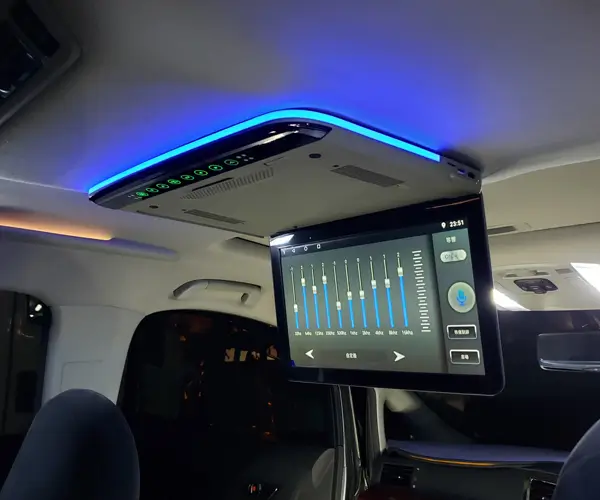In the vibrant world of automation and robotics, the ability to achieve smooth, continuous rotation without interruption is a game-changer. Enter the 360 degree continuous servo motor — a marvel of engineering designed to push the boundaries of motion control. Unlike its traditional counterparts, which operate within limited angles or require complex mechanisms to achieve full rotation, the continuous servo motor is built to spin endlessly with precision and responsiveness, opening new avenues for innovation across a multitude of fields.

But what exactly is a 360 degree continuous servo motor? In essence, it’s a motor equipped with a specialized control system that allows it to rotate continuously in either direction without stalling or losing position. This capability makes it highly suitable for applications requiring endless rotation, such as robotic arms, camera gimbals, conveyor belts, and even advanced aerospace components. The core idea revolves around precise motor control coupled with a feedback system that can modulate power and speed dynamically.
The core of these servo motors lies in their intelligent control algorithms. Traditional servo motors often rely on position feedback to rotate to a specific angle, then stop. However, continuous servos interpret control signals differently — they treat commands as speed or rotational commands rather than target positions. When a command to rotate at a certain speed is issued, the motor responds accordingly, maintaining that rotation indefinitely until another command is given.
This shift from position control to velocity control is what sets 360 degree continuous servo motors apart. They utilize advanced encoders, usually optical or magnetic, to monitor the motor’s rotation in real-time. By constantly adjusting power output based on feedback, the motor can sustain a steady, smooth rotation. The design ensures minimal jitter, maximum torque, and an impressive range of operational speeds, making them exceptionally versatile.
The technology has evolved significantly over recent years. Early implementations of continuous servos were somewhat limited in power and precision, but modern innovations have led to compact, high-performance units capable of handling heavy loads and high speeds. These improvements are driven by breakthroughs in brushless DC motor design, better sensor technology, and sophisticated control algorithms such as PID (Proportional-Integral-Derivative) and fuzzy logic systems, which optimize response characteristics under different conditions.
One of the most attractive features of these motors is their seamless, 360-degree rotation. Imagine a robot arm that needs to follow a sweeping arc without changing mechanical joints or a camera mount that needs to rotate fluidly for panoramic captures. The continuous rotation provides fluidity and flexibility that traditional servo systems simply cannot match. This capability is especially crucial in fields like cinematography, where smooth camera movements enhance storytelling, or in automation lines requiring endless rotation for product handling.
There's also the option to control direction and speed independently, providing even greater control over complex systems. With integrated interfaces such as PWM (Pulse Width Modulation), CAN bus, or serial communication, these motors can be effortlessly integrated into larger control systems. Programmers can tailor the servo's behavior for specific tasks, adjusting acceleration, deceleration, and torque curve for optimal performance.
From an engineering standpoint, the application spectrum of 360 degree continuous servo motors is vast. In robotics, they are used for omni-directional wheels, enabling robots to move smoothly in any direction. In industrial automation, they serve as the core component in rotary tables or turntables, translating rotational motion into higher efficiency. In consumer electronics, they shape the precise rotation of camera lens systems and smart home devices. The inherent versatility and scalability of these motors have made them indispensable in modern design.
Moreover, continuous servos contribute significantly to energy efficiency. Their ability to operate at optimal speeds and torque reduces unnecessary power consumption, which is particularly important in battery-powered applications such as drone systems or portable robots. By integrating smart control algorithms, these motors can also perform regenerative braking, converting kinetic energy back into usable electrical energy, further extending device runtimes.
As companies and engineers continue to push the envelope, new features are becoming available. Some advanced models now include integrated sensors for vibration detection, overload protection, and even self-diagnosis capabilities. These innovations make the motors safer and more reliable, especially in critical applications where failure is not an option.
In summary, the 360 degree continuous servo motor embodies the convergence of precision engineering, innovative control systems, and versatile design. It embodies a leap forward in how machines move, manipulate objects, and interact with their environment. Whether in cutting-edge robotics labs or factory automation lines, these motors are setting the stage for more dynamic, responsive, and intelligent systems.
Shall I continue with part 2 for a detailed exploration of applications, future trends, and technical insights?
Kpower has delivered professional drive system solutions to over 500 enterprise clients globally with products covering various fields such as Smart Home Systems, Automatic Electronics, Robotics, Precision Agriculture, Drones, and Industrial Automation.




































